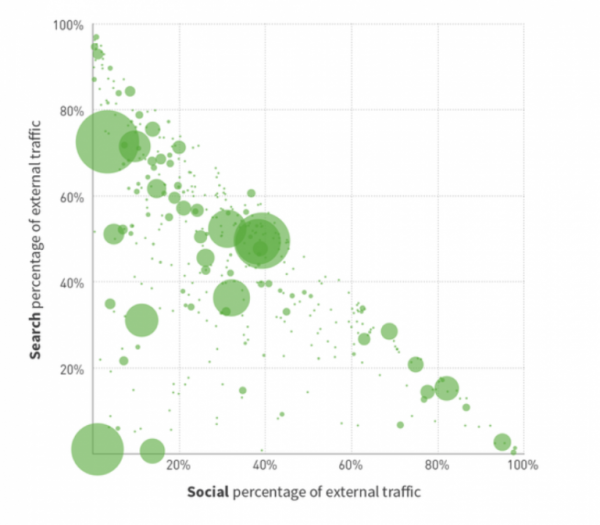Episode 08: The New News Feed
“The existential identity crisis that Facebook is going through”
Sachin and Andrew dig deeper into publishers’ risk exposure following changes to Facebook’s News Feed algorithm. Plus, they discuss the increase in younger demographics using social media, their favorite newsletters, and +1/-1 opinions on Silicon Valley (the place, the culture, and the show).
Industry news that caught our attention:
0:50 —A look at the growth of young people using social media: 71% of kids age 12 – 17 use social media, up 37.5% from 2008.
4:45 — Facebook lost 2.8 million U.S. users under 25 in 2017, according to eMarketer.
Data that held our attention:
6:24 — Facebook reevaluated its News Feed following research into how using the platform affects users’ psychology. For a deep dive on changes Facebook has made in the last two years, check out the Wired piece “Inside the Two Years That Shook Facebook—And the World.”
8:25 — Why Facebook started to make the shift to prioritizing content from friends over news and how that impacts organic reach to brand pages.
“They saw that when people were consuming content on Facebook but weren’t engaging with it, then they weren’t actually happy with the overall experience…. How they think Facebook can create a more happy or positive experience is when you actually engage with your friends and family around you, so when you comment on stuff, when you share things that your friends are posting, they’ve done research to show that that is more positive.”
— Sachin Kamdar
13:50 — Facebook is now prioritizing trustworthy news, but the design of the platform favors engagement over source authority.
“Facebook is in the game of engagement and keeping people on their platform and keeping people coming back. And so that doesn’t necessarily mean that they need to show things that are the most authoritative or trustworthy. They have to show the things that are the most interesting to people, or the most click-worthy to people.”
— Sachin Kamdar
16:58 — People want to engage with local news, so Facebook is pushing for it.
18:23 — These changes will affect how audiences find publishers’ content on Facebook. Facebook’s traffic declined over the course of 2017 and it now send about 20% of referrals to publishers.
“A lot of publishers are uneasy and they’re wondering, is this decline going to just keep going? … Back in 2012, Facebook was at around 10% of external referrals, and so a decline that went all the way that low would be almost like a five or six year reversal of the general trend for Facebook.” — Andrew Montalenti
20:58 — What publishers’ risk exposure looks like in Parse.ly’s network—or in other words, how diversified are your traffic sources?

23:46 — As Facebook traffic has declined, channels that are optimized for mobile reading and daily habits, like Apple News, Flipboard, Twitter, and LinkedIn, are areas for growth.
25:22 — Publishers with trusted brands and direct audiences in the form of homepage users, newsletter subscribers, or app users aren’t as likely to feel the effects of News Feed changes.
+1 or -1?
27:51 — +1 on favorite newsletters, including Axios Media Trends, Crunchbase News, Nonsense NYC, the Sunday Long Read.
31:42 — Silicon Valley (the place, the culture, and the show).
35:15 — Working from home.
Show Notes:
- Kids are flooding the internet, Sara Fischer and David McCabe, Axios
- Facebook lost around 2.8 million U.S. users under 25 last year. 2018 won’t be much better., Kurt Wagner and Rani Molla, Recode
- Early Facebook and Google Employees Form Coalition to Fight What They Built, Nellie Bowles, The New York Times
- Inside the Two Years That Shook Facebook—And the World, Nicholas Thompson and Fred Vogelstein, Wired
- “One of our big focus areas for 2018 is making sure the time we all spend on Facebook is time well spent.” Mark Zuckerberg, Facebook post
- What you need to know about your risk exposure for Facebook News Feed changes, Sachin Kamdar, Digital Content Next
This episode was recorded on February 13th, 2018.